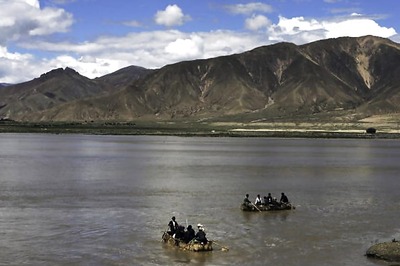
views
With the recent protests erupting all over north-east India over the Citizenship Amendment Bill, the region saw a new kind of dissent grow within its cultural spheres.
While cultural propaganda is often used to display people’s dissatisfaction, this time around the extent of it was felt in its entirety due to the advent of social media propelling the cause of artists, writers and others involved in the cultural hubs in their respective regions.
The arrest of Hiren Gohain, well-known literary critic, poet and social scientist of Assam, invoked a people’s movement that ultimately resulted in a small victory on February 13 when the Bill was not tabled in Rajya Sabha and hence, lapsed. The path forward is still shaky with the 2019 elections at bay and it will be interesting to see how the unity of the people in the North-East plays out then.
Amid the protest demonstrations, Manipur’s people’s movement took centre stage. They approached the controversial Bill with a singular agenda; demanding its withdrawal, while using an array of tools available to make their voices heard.
This united effort saw hundreds of women vendors of Manipur defy curfew and continue their sit-ins. A group of young men also staged a nude protest in front of the Bharatiya Janata Party (BJP) office near the Manipur University, torch marched rallies and burned effigies of the prime minister and state chief minister to name a few. Besides taking to the streets, some took up the pen.
While journalists from and outside the state tirelessly worked to bring the stories of the people and the situation to the forefront, Akhu Chingangbam with Imphal Talkies and Howlers marked their protest with a song Stand Against CAB, that they produced during a 24-hour shut-down in the state.
Renowned Manipuri filmmaker Aider Shyam Sarma too returned his Padma Shree as a sign of protest.
Violent Nostalgia
The people of Manipur have been exposed to violence for over three generations now. The consequences of this long-term exposure to violence cannot be fathomed as part of the population has accepted violence as a social norm.
It thus becomes important to dwell on the history of resistance in Manipur which is stamped as a war zone in contemporary literature. The Kuki rebellion of 1917, against the British, Nupi Lan or women’s movements of 1904 and 1939 acted as important turning points in the political landscape and pave the way for economic and political reforms.
The signing of the Accord in 1949 and the imposition of the Armed Forces Special Protection Act (AFSPA) to curb the resulting resistance, incited ethnic tensions and saw the formation of several insurgency groups who sought the creation of an independent state within the borders of Manipur - United National Liberation Front (UNLF) (1964) being the most prominent.
This vicious cycle of armed insurgency and counterinsurgency quickly evolved into structural warranting of a peacebuilding response which came in the form of the hunger strike taken up by Irom Sharmila from 2000 to 2016 and the ‘Naked Women Protest’ also known as the Kangla Protest of 2004.
These events became important milestones in the history of resistance and protest in Manipur. Both represent a bold statement of resistance against the rule of AFSPA and restoration of peace through non-violence.
The most significant milestone was the writ petition filed against the AFSPA by the civil society organisation Extra-Judicial Execution Victim Families Association (EEVFAM) working toward bringing victims of the alleged extrajudicial killings to justice and mitigating violence in the state which was upheld by the Supreme Court of India ultimately leading to an end of the impunity of AFSPA.
The AFSPA still continues to operate in most of Manipur except Imphal Municipal Area, but with greater accountability.
Culture of Resistance
In the light of the recent protests, AFSPA has failed to curb this growing dissent on behalf of the centre and in fact remains a continuing reason for such resistance movements in the first place. The AFSPA and the rigid policies of the current government along religious lines not only threaten the identity of the people but also strengthen their notion of alienation from the centre.
Therefore, in Manipur, the notion of a protest culture can be seen throughout in the years of exploitation by the politically powerful. The ideas of resistance and discord with the centre have now seeped into the everyday lives of people thereby provoking the amalgamation of the lived cultures, signifying practices and cultural texts within the context of counter-state violence or protest.
The ‘culture of violence’ thus dictates a culture of resistance which can be named ‘protest culture’ implying the intersection of popular culture and protest culture.
The 1960’s resurgence of Meitei identity in Manipur was seen an attempt to reverse a history of assimilation into a homogenous Hindu identity. This period raised a sense of alienation which was highlighted through the rejection of symbols of mainland India such as the Hindi language, allowing Manipur to produce more cultural texts and materials which reflect the region’s ideology.
Today, in the Manipuri performance spaces, the remnants of memory and history can be found in the form of fusion performances. This is also a result of the increasing effect of globalization in post-modern times. Bands such as ‘The Koi’ or ‘Imphal Talkies and the Howlers’ are just some examples of this trend towards fusion. Most of their lyrics are in Manipuri and the tunes comprise traditional folk music of Manipur intersected with western-rock elements. Similarly, Ratan Thiyam, a reputed theatre personality, uses elements of Nata Sankirtana and Thangta in many of his plays.
A major factor that impacts the cultural space in Manipur is the continuous violence: from paramilitary presence, insurgency or ethnic tensions. The imagery associated with violence is affected by both history and memory and is embedded in the everyday lives of people. World view in Manipur can, thus, be viewed from the perspective of the oppressor (who wields the power to write history) versus the oppressed (who wields the power of memory).
The oppressed then finds different mediums to counter history using a nostalgic lens which results in a heightened sense of resistance in all activities of society. This is reflected in many performances by artistes who have come out of Manipur.
Jayanta Loukrakpam, popularly known as Tapta, a celebrated regional singer-songwriter in Manipur, highlights the issues of the violence-torn state while expressing his love for his Motherland (Manipur). Others such as Kanhailal and his theatre group Kalakshetra Manipur and the band Imphal Talkies and the Howlers too reflect this ideology of resistance.
The cultural space in Manipur is a stratified space shaped by memory inducing a sense of resistance in the hope for a violence-free, peaceful society where justice prevails.
Performance and Protest
Reiterating the role of the cultural space in the resistance efforts of the State, the works of two protagonists similar in content but divided by time and mode of expression is useful for explanation here.
Formed in 2008, Imphal Talkies and the Howlers is a four-piece folk-rock band from Manipur comprising of Riki Chingangbam (Vocals), Akhu Ronid Chingangbam (Guitars and Vocals), Sachidananda Angom (Guitars) and Raju Athokpam (Bass) has constantly strived to create awareness about the social and political issues of the state.
The band has released three albums while actively engaging with issues of politics, insurgency, human rights, racial attacks, and environment with special emphasis against the draconian AFSPA. They have several tracks which express profound anguish and rage over these issues. Over the years Imphal Talkies and the Howlers have produced influential music that has unapologetically shone light on the situation in Manipur.
Political commentary is where Imphal Talkies excel.
One of their most powerful politically charged albums came out in 2014 in the form of When the Home is Burning; it was a journey into the past comprising of six songs. The album can be read as a sense of resistance against injustice across this country in general and Manipur in particular.
Their recent song Stand Against CAB highlighted in the beginning of the articles is yet another example of the same.
Apart from the band, Akhu also runs a project called A Native Tongue called Peace. It is a music project under the sponsorship of Guwahati based NGO- Foundation for Social Transformation (FST) which uses music as a tool for peacebuilding and therapy. It works with orphaned and abandoned children to promote peace and harmony between the ethnic tribes/communities of Manipur.
The late Heisnam Kanhailal (1941-2016) was a prominent figure in the cultural space in Manipur as the Founder and director of Kalakshetra Manipur (KKM) (1969), a theatre group. For 40 years, Kanhailal along with his wife, Sabitri Devi, dedicated himself to theatre in the state.
Based out of Imphal, the KKM was established in 1969 and it has since endeavored to continue the idea of fusing ancestral mores with contemporary cultural expression to highlight ethno-socio traditions of Manipur. His work has mainly concentrated on the question of identity and socio-political issues surrounding the Manipuri people. His thoughts and representations of communities in his plays, especially the Meitei, force one to identify and recognize the state and ethnic violence that blankets everyday life in Manipur.
The common thread that runs through the works of Akhu and Kanhailal is the violence they have witnessed despite being from different points of time in the history of their State. Each in their own field has voiced opinions about the socio-political issues in Manipur in relation to the contemporary events unfolding in their time.
Both have a strong voice against the State violence and imposition of AFSPA. Be it Kanhailal’s Draupadi or When the Home is Burning, or India I See Blood on Your Hands by Imphal Talkies, both depict the atrocities committed against the common people of Manipur. Their works also delve deep into the overall alienation that Manipur feels not only from mainland India but also among the different ethnic communities within Manipur. Pebet becomes a prime example in this regard. Imphal Talkies’ Qutub Minar too confronts the feeling of alienation and abandonment that is deeply entrenched in the community.
In relating to the resistance movement, both Akhu and Kanhailal advocate against the violence in the state through their respective performances. Many of their performances are an effort towards the peacebuilding process and are meant to provoke a reaction from the audience.
Through their art, they strive to instill belief in greater participation of the community in order to bridge class and ethnic differences which are both a cause and effect of the structural violence in the state. Their efforts to include the Manipuri community at large are also prominent in their local initiatives and cultural expeditions in the form of a music festival, community project A Native Tongue Called Peace or the two large-scale community performances – Nupi Lan and Sanjennaha (Cowherd).
However, this space cannot function on its own. While the space does not lack creativity, what it lacks is the organizational support and mobility of the resources to sustain this cultural space. It has become increasingly clear that forced ideologies to create a united people must be countered with persistent efforts of cultural efforts of expression at a local level highlighting a dire need for the government to regard culture as not merely an adjunct to political power but rather as a vital concern linked to the necessities of education, health and environment.
The recent protest can attest to the fact that the cultural efforts at the community level hold the power to sway public opinion and create a dent in the political workings because after all a democracy theoretically works for the welfare of the people, through the political agents that the very people vote into positions of power.
The cultural space in Manipur is dominated by imagery of past memories of violence. However, it also holds the power to create new memories by re-negotiating this violence within the present rather than normalizing violence.
The engagement of cultural spaces in the operating cycles of violence now must be seen as a positive sign of the intersection of popular cultures with protest cultures because no cultural activity can exist in vacuum without addressing the political situation it is surrounded by. It chooses to work against the notion of a culture of violence.
(ABOUT THE WRITER: Radhika Goswami is a Social Anthropologist from SOAS, London. This piece is an excerpt from her research. Views expressed are personal.)




















Comments
0 comment